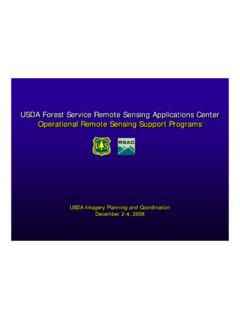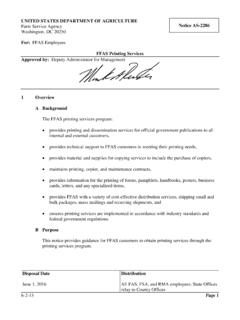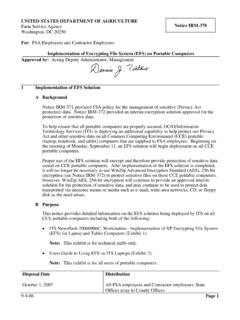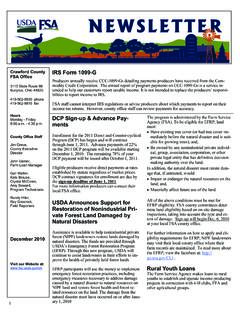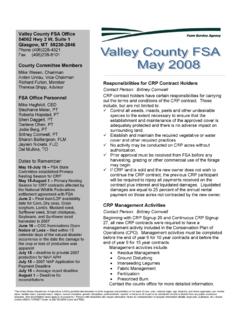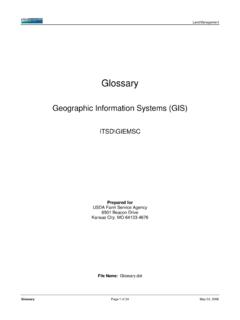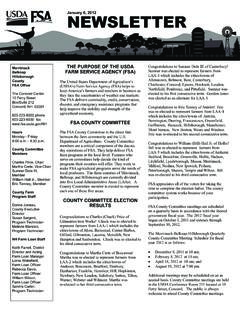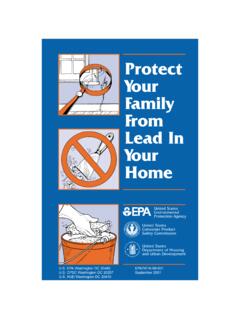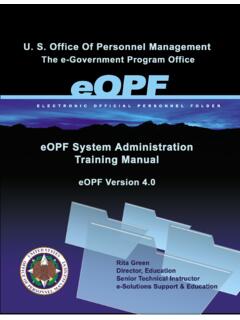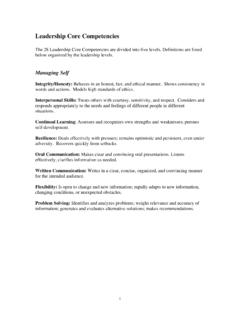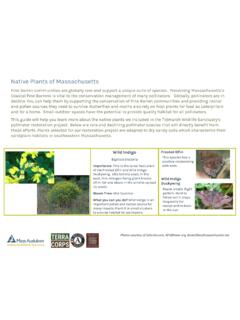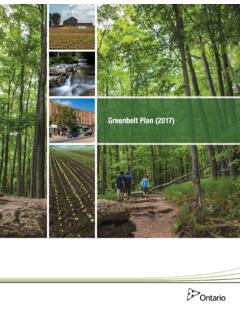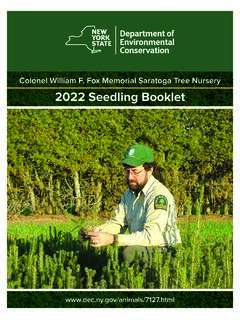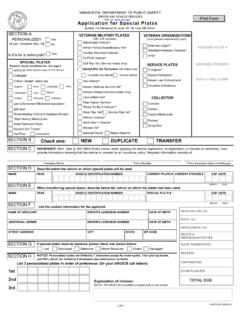Transcription of Conservation Reserve Enhacement Program
1 Conservation Reserve Enhancement Program (CREP)OverviewThe Conservation Reserve Enhancement Program (CREP) is a component of the USDA Farm Service Agency s (FSA) Conservation Reserve Program (CRP). CREP is a public-private partnership Program , allowing states, Tribal governments, non-profit and private entities to partner with FSA to implement CRP practices that address high priority Conservation and environmental objectives. Partners work with FSA to develop CREP agreements designed to address Conservation goals on agricultural lands in specific geographic areas. Possible Conservation practices that can be implemented include riparian buffers, filter strips, wetlands, and pollinator plantings. Partners work with FSA to define practices that achieve substantial on-site and off-site natural resource benefits targeting one or more of the following goals: Restore/establish wildlife habitat Maintain or improve grassland productivity Enhance water quality Reduce soil erosion Enhance air quality Restore/enhance wetlands Promote Conservation forestry Increase control of critical invasive species Enhance critical threatened and endangered plant and animal species survival Achieve a net water savings in ground and/or surface waters and conserve encourages CREP agreements that target multiple natural resource concerns to maximize Conservation benefits.
2 CREP AgreementCREP is administered under the same statutes and Federal regulations as CRP. The following statutory requirements are applicable to all CREPs: Eligible land must have cropping history for four out of the past six years $900,000 Adjusted Gross Income (AGI) limitation for a person or legal entity County average soil rental rate Producers receive a percent Sign-up Incentive Payment (SIP) at the time of sign up Per-practice cost share from USDA, Practice Incentive Payment , plus any cost share payments from other sources combined, cannot exceed 100 percent of the cost of establishing the practice Annual payment limitation of $50,000 per producer CRP enrollment is limited to no more than 25 percent of the total cropland in a county If applicable, the riparian buffer practice can receive a management payment to offset the cost of managing the bufferThe following discretionary provisions may be negotiated for each CREP Agreement.
3 Practice Incentive Payment rate1 Additional practice or rental rate incentives1 Practice Incentive Payment (PIP) is a one-time incentive payment made to an eligible participant to whom USDA has made a C/S payment for completing the installation of a CRP practice that is an eligible continuous CRP signup More InfoCREP is one option under CRP that farmers and ranchers may select to enhance their land. Eligible producers may also enroll land in CRP through the general, continuous, or grassland signups; however, CREP may provide additional benefits not available through those signup types such as higher incentive payments and longer contract lengths that increase the total amount of rental payments more information on CREP, contact the CREP Program Manager or East, Central, or West CREP/CRP Regional CREP Program ManagerKim Martin Regional Specialists:East: Evelyn Whitesides Central: Kim Martin Patrick Lewis Reserve ENHANCEMENT PROGRAMCREP Partner CommitmentsPartners can match USDA s commitments in the form of cash, in-kind contributions, or technical assistance.
4 Each CREP agreement requires the partner to provide an annual performance report which details Program accomplishments, contributions to the project, and progress in meeting Program goals. Federal CommitmentsTo meet CREP goals, USDA provides financial, educational, and technical assistance to help producers voluntarily implement Conservation practices that will enhance the environment in an economically efficient manner. USDA is an equal opportunity provider, employer, and created by DAFP/CD/CSB September 9, 2021 State BoundaryEast RegionCentral RegionWest RegionCREP REGION MAPF orested buffers, such as the one that will be created by these new trees, improve water quality by reducing stream bank erosion, filtering runoff, reducing flooding, and more. Photo and caption: Chesapeake Bay Foundation.
